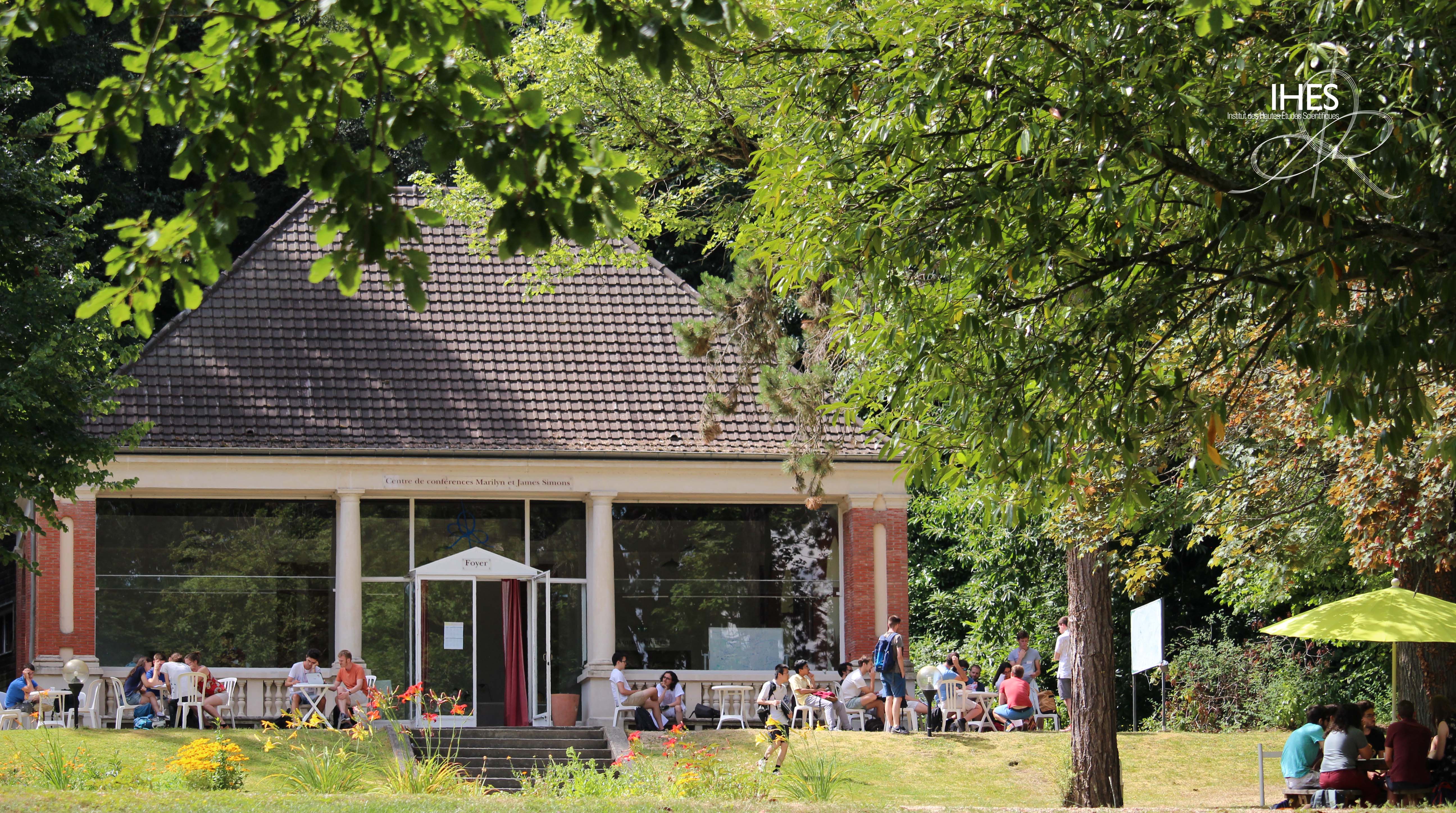Algebraic Structures in Perturbative Quantum Field Theory
Marilyn and James Simons Conference Center
IHES
----------------------------------------- IMPORTANT INFORMATION ------------------------------------------
Due to the evolution of the health situation related to the Coronavirus epidemic, the conference will finally be totally on line. The Zoom link will be sent in the confirmation mail.
----------------------------------------------------------------------------------------------------------------------
Algebraic Structures in Perturbative Quantum Field Theory
A conference in honour of Dirk Kreimer's 60th birthday
On the occasion of Dirk Kreimer's birthday, there will be a special issue of SIGMA on "Algebraic Structures in Perturbative Quantum Field Theory".
Perturbative quantum field theory is essential for precision calculations of observables measured in experiments like the LHC, and therefore it is crucial for our understanding of the physics of the universe. At the same time, it is an extremely rich source of connections to a wide range of active research areas in mathematics. For example, Feynman integrals give rise to interesting motives and periods in algebraic geometry, their renormalization rests on combinatorial Hopf algebras underlying Feynman graphs, and further relations to noncommutative geometry and the moduli space of tropical curves and outer space have also been discovered.
This growing program keeps expanding in both breadth and depth, and exciting young researchers are entering the field. Now is an opportune time to bring together scientists working on all related aspects, to review old and new connections and to advance the state of the art. Lectures by established scientists will be accompanied by talks from young researchers, including a session dedicated to present and discuss open problems.
Close collaborations between mathematicians and physicists have been absolutely key for this kind of research, and many were initiated by Dirk Kreimer. Throughout his career, he made substantial contributions across these topics and led students and collaborators to the profound mathematical structures in perturbative quantum field theory that we are aware of today. Dirk Kreimer spent a particularly productive time at the IHES, and it is an honour that this workshop takes place in its inspiring and interdisciplinary environment.
Organisers: Erik PANZER (University of Oxford) & Karen YEATS (University of Waterloo)
Invited speakers include:
- Ali Assem Mahmoud, University of Waterloo
- Marc Bellon, LPTHE (Sorbonne Université)
- Marko Berghoff, Humboldt-Universität
- Spencer Bloch, University of Chicago
- Johannes Blümlein, DESY Zeuthen
- Michael Borinsky, Nikhef
- David Broadhurst, The Open University
- Francis Brown, University of Oxford
- Yvain Bruned, University of Edinburgh
- Alain Connes, IHES & Collège de France
- Andrei Davydychev, Moscow State University
- Gérald Dunne, University of Connecticut
- Kurusch Ebrahimi-Fard, NTNU Trondheim
- Loïc Foissy, Université du Littoral Côte d'Opale
- Hadleigh Frost, University of Oxford
- John Gracey, University of Liverpool
- Martin Hairer, Imperial College London
- Ralph Kaufmann, Purdue University
- Thomas Krajewski, CPT Aix-Marseille
- Dominique Manchon, CNRS & Université Clermont-Auvergne
- Lukas NABERGALL, University of Waterloo
- Sylvie Paycha, Institut für Mathematik Potsdam
- Oliver Schnetz, FAU Erlangen-Nürnberg
- Christian Schubert, Universidad Michoacana de San Nicolas de Hidalgo
- Matt Szczesny, Boston University
- Walter van Suijlekom, Radboud Universiteit Nijmegen
- Karen Vogtmann, University of Warwick
- Raimar Wulkenhaar, Westfälische Wilhelms-Universität Münster
Organized with the support of:


